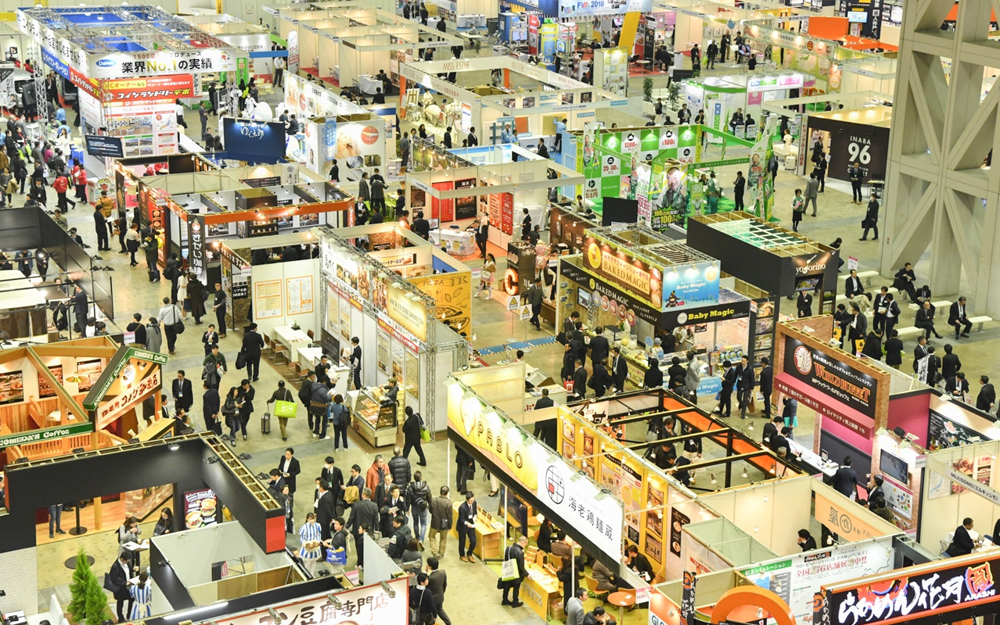フランチャイズ・ショーに参加して。

English ↓
Participating in the Franchise Show
March 9, 2021 - We attended the Nikkei Franchise Show again this year.
We have proposed the internationalization of the franchise show to Nihon Keizai Shimbun for about seven years, and have increased the number of visitors from overseas every year together. We also proposed inviting overseas franchise show organizers to Japan. In 2020, the franchise show itself was canceled, and this year it was held under a state of emergency declaration. Naturally, there were few visitors from overseas in Corona.
Seven years ago, I got that idea after working with JETRO to bring Japanese companies to exhibit booths at the New York franchise show.
At the time, I was concurrently serving as JETRO's overseas coordinator, and as I looked at various overseas franchise data, I wondered why Japanese franchises, the second largest franchise market country in the world, were not making any headway in the world.
U.S. franchises have been looking at the world since the inception of their headquarters. Franchises in the U.S. are ranked No. 1 in the world. Franchise headquarters expanding overseas are also No. 1 in the world.
The U.S. headquarters looks at the world from the beginning of its establishment. The Japanese headquarters, which first grows to a certain size and then waits for offers from overseas to start thinking about expansion.
Japanese franchise headquarters are lagging behind in terms of speed of expansion and number of stores.
Also, the number of foreign visitors to the show itself is very small. Despite such a large franchise market in Japan, the percentage of visitors from overseas is very low.
The Singapore franchise show is very international. The booth exhibitors are from Asian countries, the EU, and the U.S., making it a very international show.
I believe that the internationalization of both booth exhibitors and show visitors will be a guideline for Japanese franchises to go out into the world.
Putting internationalization aside, every year that I am involved in this show, I can see the trends of the times.
In the past few years, it has been tutoring schools, nursing care, laundromats, and fitness.
This year, there were a great many fitness gyms exhibiting in booths.
What is happening to the gakushu-juku, nursing care, and laundromat now? Those that cannot differentiate themselves are disappearing.
What kind of differentiation? What differentiation from the customer's point of view? What is their real product and who are their real customers? What does that customer want from fitness? How do we approach that customer?
This analysis is most important.
Convenience stores are over-competitive, but it is a three-way race between Seven, Famima, and Lawson.
Seven is the leader in daily sales. What is the reason why famous entrepreneurial managers cannot even catch up with Seven, let alone overtake it, even if they join other companies? Is it something other than just the logic of scale and distributing in management theory? Is it the difference in product assortment?
Who is it for and why?
Think about that.
Thoroughness of the obvious. Thoroughness of the ordinary. A state where products are wanted and not sold out. Single item management and product development capabilities.
Even the planning and development of a single coffee machine is done in collaboration with the manufacturer. They are also committed to making their products private brand (PB).
Don Quijote is active both in Japan and overseas, even in grocery supermarkets.
What is Don Quijote's segment among the many discount supermarkets, large-scale mass merchandisers, and upscale supermarkets? What kind of product assortment? Who is it for? Why?
Think about that.
Instead of asking the customer's subconscious mind, ask the customer's conscious mind. Develop products and create business models from the customer's point of view.
This is important.
Assentia Holdings
Akira

